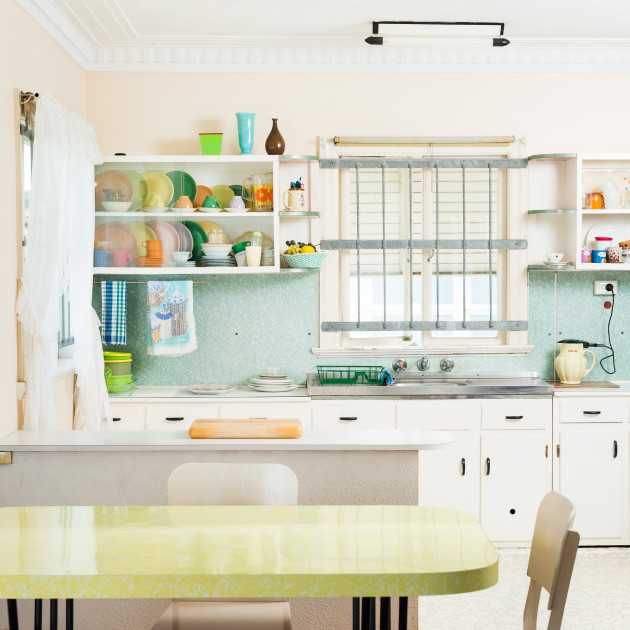Fibro Coast by Alan Hill and Kelly Hussey-Smith
When seen in a global context, Australia’s architectural history may be far from spectacular, but as a country of coastal dwellers and people renowned for their ingenuity when surviving in a climate that is adverse at the best of times, the classic “fibro” homes of our shorelines have become symbolic of a stripped-back, bare-bones approach to seaside living. However, the rapid disappearance of these structures from the landscape was recognised by the Gold Coast City Art Gallery when they commissioned Alan Hill and Kelly Hussey-Smith to interpret the changing social landscape of South-East Queensland. Hill and Hussey-Smith’s resultant series Fibro Coast, takes a formal and aesthetic approach to documenting the cultural significance of these humble spaces while they still stand.

Not dissimilar to a number of cherished Australian cultural phenomena, it’s the working class-romanticism that makes these houses iconic. Fibro – a colloquialism for fibreglass cement sheeting – became the material of choice for cheap, lightweight holiday shacks that dotted large numbers of East Coast beaches. But as Hill and Hussey-Smith discovered, rising land prices and urban sprawl are seeing an end to their presence on the coastline. “There were several Fibros that we visited that are probably no longer standing. Fibros that have been in families for generations are now sitting on extremely valuable land. Ultimately, many families that have inherited these houses can’t really afford to keep them. As a consequence, they are put on the market and are almost always sold to developers. So, they will eventually disappear,” says Hill.

This ephemeral nature to the dwellings influenced Hill and Hussey Smith’s approach to the project as their initial idea of photographing the owners of these structures made way for an emphasis on the Fibros themselves. As Hill elaborates: “We initially photographed the owners and residents, and collected narratives from each house,” Hill says, “but we felt as though it wasn’t quite the story that would best communicate the broader issues were seeking to raise. It was only when we realised that the house itself was the main character in the story that the project opened up. Once we worked this out, we were able to use a language that emphasised the minimalism and informality of the spaces.”

And it was in this way that Hill and Hussey-Smith came to realise the value of Fibros as “uniquely Australian architectural vernacular”. “This was pointed out to us by Architect and Fibro enthusiast, Roger Todd, and relates to the idea that because these buildings were holiday dwellings, and often built by non-professionals, they evolved to be practical, minimalist, and functional spaces that suited the Australian (summer) climate. Someone once said to us that in their most simple form, they were really not much more than a ‘tent with walls’,” says Hill.
Evidently, this simple balance of aesthetic and functional qualities that makes Fibros so suited to our environment hasn’t gone unnoticed as their simple construction style has been echoed in contemporary and pre-fab architecture around Australia. And, as Hill describes, it’s this evolution within the landscape that has endowed them with an inherent admirable quality. “I guess in that way, it’s quite unique because it wasn’t ‘imported’ from overseas, like Art Deco or other architectural movements, it actually evolved here, through a combination of aspiration and necessity,” says Hill. But the demise of these structures has also provided an opportunity to reflect upon the ways previous generations experienced the beach-going experience, in turn providing some context for our own methods. “The stories of Fibro beach homes provide a lens through which contemporary issues affecting communities, such as tensions arising from the process of gentrification and the arrival of populations of ‘sea-changers’, can be discussed,” Hill explains. “I guess we are seeking to celebrate the uniqueness of these spaces as functional and minimalist forms, while examining the changes taking place in their midst.”

Alan Hill and Kelly Hussey-Smith explore societal and ideological positions through social landscapes, with a particular interest in transitioning relationships between economy and community.
Links
Alan Hill
Kelly Hussey-Smith


